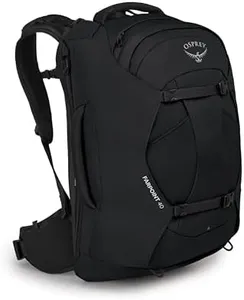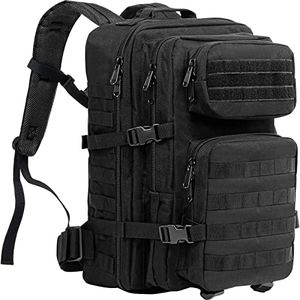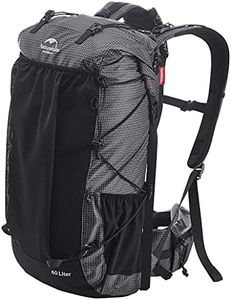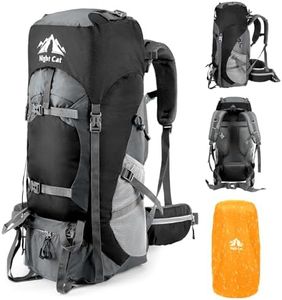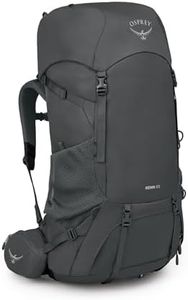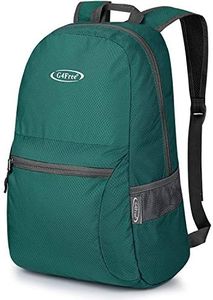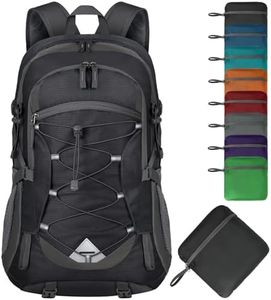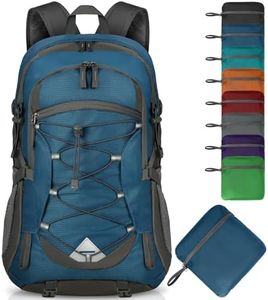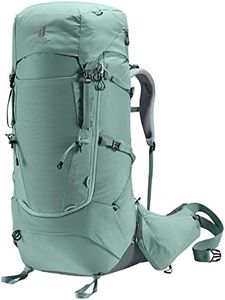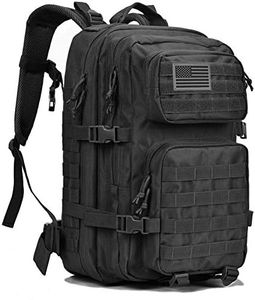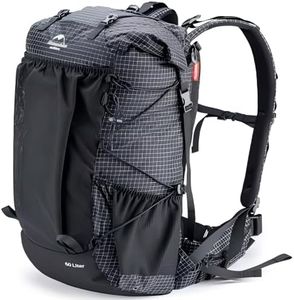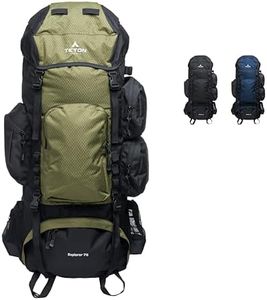We Use CookiesWe use cookies to enhance the security, performance,
functionality and for analytical and promotional activities. By continuing to browse this site you
are agreeing to our privacy policy
10 Best Camping Backpacks
From leading brands and best sellers available on the web.Buying Guide for the Best Camping Backpacks
Choosing the right camping backpack is crucial for a comfortable and enjoyable outdoor adventure. The best backpack will keep you organized, balance weight on your body, and stand up to the elements. Your activity, trip length, body size, and how much you want to carry all play a part in your decision. Focus on fit, capacity, and features to find a backpack that suits your needs and keeps you happy on the trail.Capacity (Volume)Capacity refers to the amount of space inside the backpack, usually measured in liters. This helps determine how much gear you can pack, which is important for the length and type of your trip. Smaller backpacks up to 40 liters are suitable for overnight or ultralight trips, while 40-70 liters works well for multiday hikes, and larger packs (above 70 liters) are best for extended journeys or carrying extra gear. To choose the right capacity, think about how long you’ll be camping and how much stuff you really need; pack light when possible but don’t skimp on essentials.
Fit and SizeBackpack fit is about how well the pack matches your torso length and hip size. A well-fitted backpack will distribute weight more evenly and reduce strain on your shoulders and back. Backpacks often come in different sizes or have adjustable harnesses to match various body types. To get the right fit, measure your torso and hips, and match them to the manufacturer's size chart. Choose a bag that feels comfortable and secure when loaded; good fit is key to avoiding aches on long treks.
WeightBackpack weight is how heavy the empty pack is before you add gear. Lighter packs are easier to carry, but may have fewer features or less padding, while heavier packs are generally more durable and comfortable with structured frames. Pick a weight that matches your personal preference and trip style: go ultralight for short, fast adventures, or select a sturdier, feature-rich backpack if you value extra support and durability.
Frame TypeFrame type refers to the support system inside the backpack. Internal frames hug your back and keep the load close, which is great for stability on rough terrain. External frames are bulkier but offer better airflow and are easier to organize. Frameless backpacks are very light but lack support. Your choice depends on your activity: choose internal frames for most hiking and backpacking, go external if you need extra ventilation or organization, and frameless if you’re carrying a very light load.
VentilationVentilation means how well the backpack keeps your back cool and dry. Good ventilation systems have mesh panels or channels that let air flow between your back and the pack. This is more important in hot climates or for those who sweat a lot. If you’re hiking in warm weather, look for backpacks with advanced ventilation; in cooler areas or for short trips, standard back panels are usually fine.
Organization and PocketsOrganization covers how the backpack lets you store and access your gear. Features like multiple compartments, pockets, and straps help distribute items for quick access and better weight balance. Some packs have special sleeves for water bladders, sleeping bag compartments, or hip belt pockets. Pick the amount of organization you need based on what you want to carry, how quickly you need to access certain items, and your own packing style.
Material and DurabilityMaterial refers to the fabrics and stitching used to make the backpack. More durable materials, like high-denier nylon or reinforced fabrics, hold up better to abrasion and rough use, but may add some weight. If you expect to be rough on your gear or want a bag that lasts for years, prioritize durability. For occasional or gentle use, lighter materials may work just fine.
Hydration CompatibilityHydration compatibility means the backpack can hold a water reservoir (bladder) and has an opening for the drinking tube. This is a convenience feature for drinking on the go, especially during long hikes. If you like sipping water without stopping, look for this feature; otherwise, traditional water bottle pockets may be adequate.

